Round Valley and the Town of Covelo Today
Originally, Round Valley was home to the Yuki people, but in 1854 white settlers moved in and tensions began between the Europeans and the Native Americans. Later many other tribes were dumped into the Valley, rounded up from far corners of California, many of them being traditional enemies of one another, which added mightily to the hostile social environment. Ranchers and Indians managed to coexist; the occaisional knife-fight at the Buckhorn Saloon notwithstanding.
Then in 1973 arrived a new invasion, this time an army of hippies led by a mad Englishman. None of the locals knew quite what to do about this new breed that was neither fish nor fowl. Hippies were supposed to be lazy, but these kids worked harder than anyone else in the valley. Hippies were supposed to take drugs and grow pot, but these did none of that; they were clean living and respectful. Mercifully, everybody managed to get along, a testimony to the basic good nature of most of the individuals involved. There was considerable grumbling among the locals while Chadwick and his crew were living in the valley, but when they left, not a few were heard to comment that they missed the liveliness of the place that had been during that time.
Now, unfortunately a new invasion is taking place. Commerical pot farmers are driving up land prices, contaminating the rural landscape with chemicals, human waste, and all manner of trash. They are depredating the wildlife as they hunt both in and out of season. And worst of all, they are luring many of the young people into a life of illegal drug cultivation and "easy money," which threatens the work ethic that is essential for a self-reliant life style on the long term.
The following photographs depict Covelo and its present day environs as of August, 2012.

A view of Round Valley from the overlook on Highway 162.
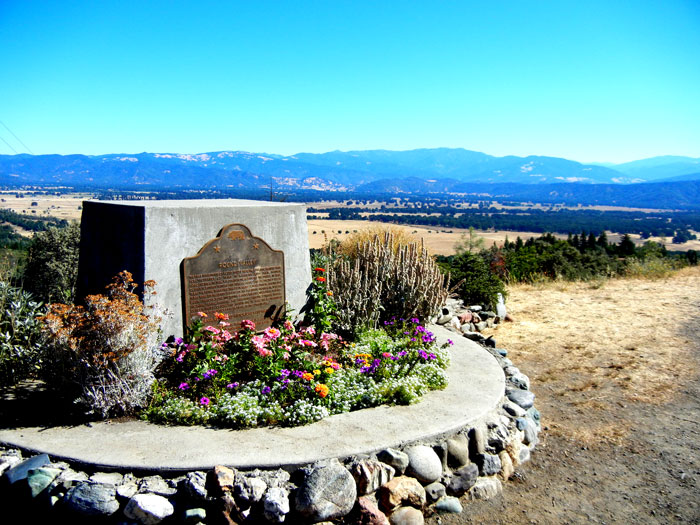
The historical monument located at the overlook.
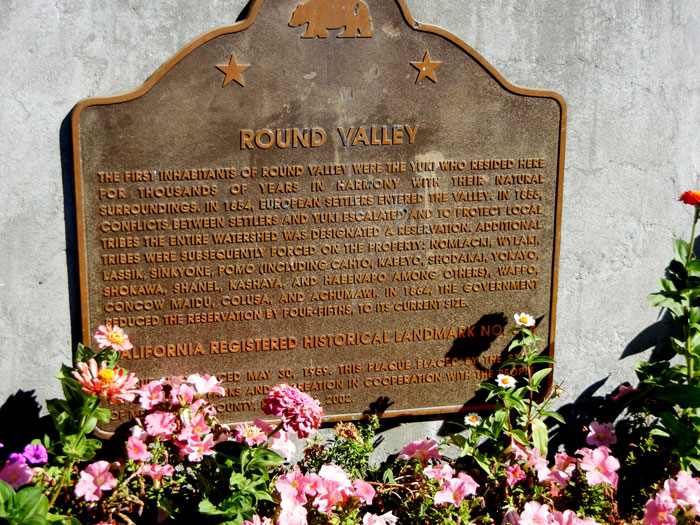
Text of the historical plaque above Round Valley, California
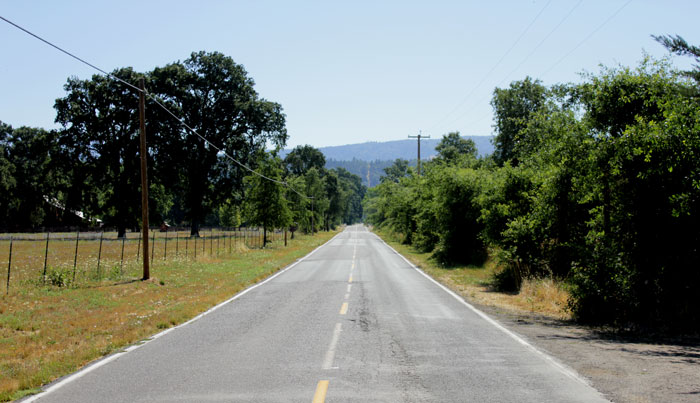
A typical view from the highway near Covelo, California
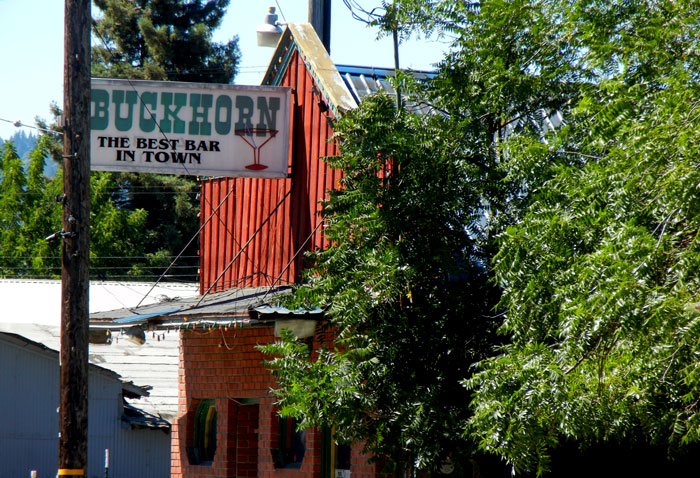
A local landmark. Richard Wilson relates how the loggers would gather here after work and debate whether they (the loggers) or the Chadwick apprentices worked harder.
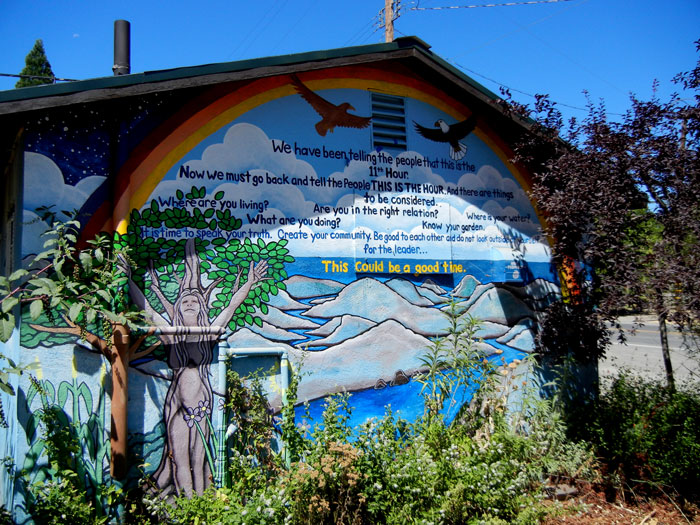
A mural in downtown Covelo, located next to the Post Office and the coffee shop. The text says:
"We have been telling the people that this is the 11th hour. Now we must go back and tell the people, THIS IS THE HOUR, and there are things to be considered: Where are you living? Are you in the right relation? Where is your water? What are you doing? Know your garden. It is time to speak your truth. Create your community. Be good to each other and do not look outside of yourself for the leader. This could be a good time.
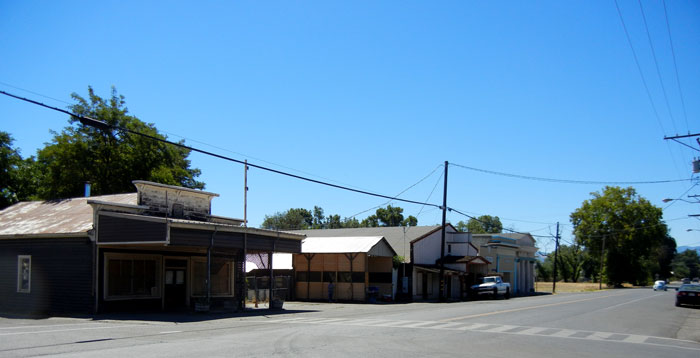
A view of the architecture in downtown Covelo.

Businesses in Covelo.

The old flour mill in Covelo, California
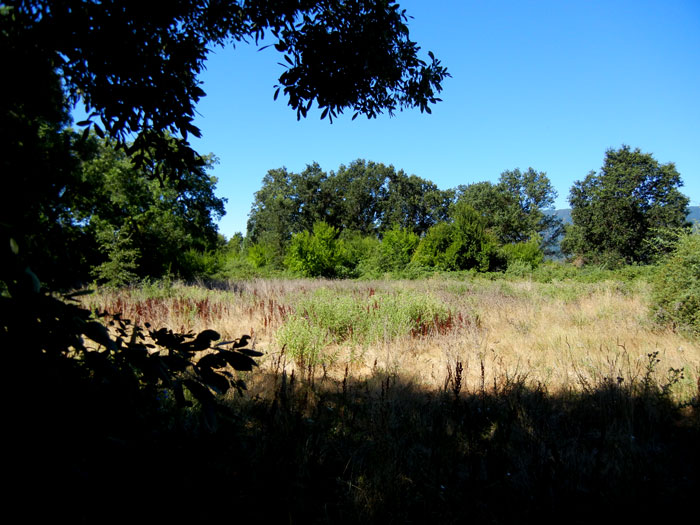
Alan Chadwick's first garden site in Covelo. This garden flooded out in the heavy rains of 1973-1974, and so the garden was then moved up to its final site in the northwest corner of the valley. Nothing remains here but some very lush blackberry bushes that are taking advantage of the fertility added to the soil back when Alan and his people cultivated and fertilized this area. Alan and a few of his apprentices lived here in tents during that first summer. Others lived up at Buck Mountain, Richard Wilson's mountain retreat.

Covelo's modern day trading post.
All photos taken in August, 2012, by Greg Haynes.
